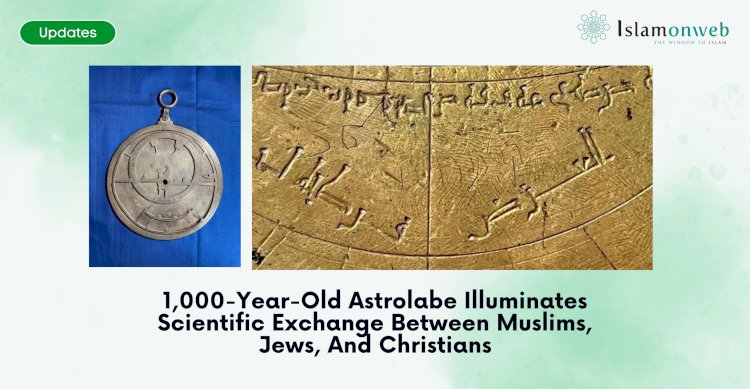1,000-Year-Old Astrolabe Illuminates Scientific Exchange Between Muslims, Jews, And Christians
A remarkable ancient artifact, identified as an astrolabe dating back to the 11th century CE, has emerged as a symbol of interfaith connections throughout its rich history. The astrolabe, a tool once employed for timekeeping and distance calculations, showcases inscriptions in Arabic, Hebrew, and Western numerals, indicating its use by individuals from Islamic, Jewish, and Christian faiths.
Functioning as a pocket-sized map of the universe, astrolabes allowed users to map star positions. The diverse etchings on this particular astrolabe, attributed to multiple creators, suggest its journey through Europe and North Africa, passing through the hands of Islamic, Jewish, and Christian owners in ancient scientific exchange networks.
Dr. Federica Gigante of Cambridge University stumbled upon the 1,000-year-old astrolabe on the Fondazione Museo Miniscalchi-Erizzo's website in Verona, Italy. Initially mistaken for a fake, it is now hailed as the most significant item in the museum's collection. Gigante, after a close study, linked the original Arabic engraving style to instruments from Islamic-ruled Al-Andalus in Spain during the 11th century, validating its age through celestial map alignments.
The astrolabe features Muslim prayer lines, indicative of the original user's adherence to daily prayer times. An Arabic inscription mentioning "for the latitude of Toledo, 40°" suggests its possible origin in Toledo during a time when Muslims, Jews, and Christians coexisted. Signatures with the names Isḥāq and Yūnus, potentially representing Arabic-scripted Jewish names, hint at circulation within Spain's Arabic-speaking Jewish community.
Further inscriptions indicate the astrolabe's journey to North Africa, possibly Morocco or Egypt, before returning to European Jews with Hebrew lettering. Eventually, Western numerals, likely added in Verona by a Latin or Italian speaker, indicate the astrolabe's transition into Christian hands.
In a study published in the journal Nuncius, Gigante underscores the astrolabe's significance as a testament to the medieval and early modern exchanges among Arabs, Jews, and Europeans.
Disclaimer
The views expressed in this article are the author’s own and do not necessarily mirror Islamonweb’s editorial stance.
























Leave A Comment